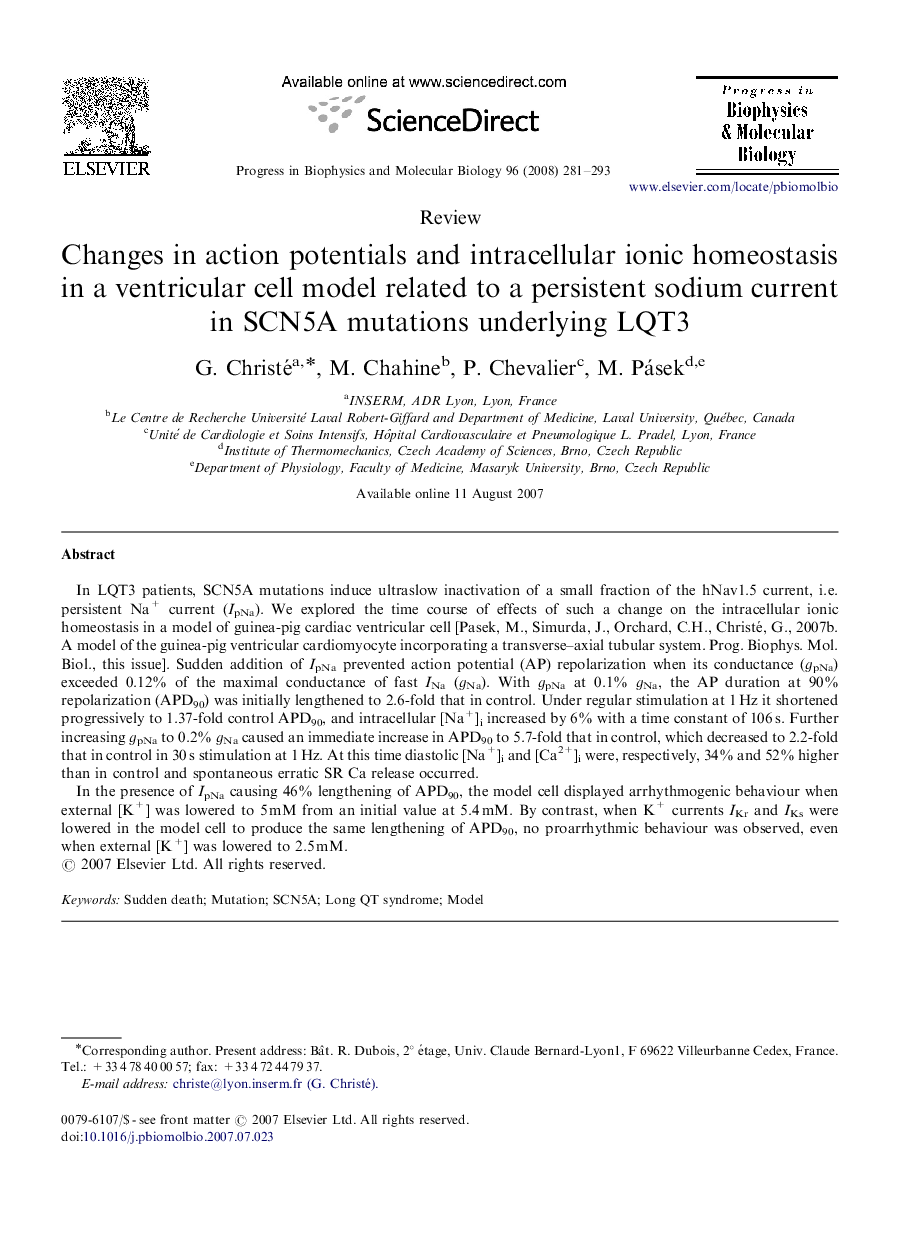| Article ID | Journal | Published Year | Pages | File Type |
|---|---|---|---|---|
| 2070419 | Progress in Biophysics and Molecular Biology | 2008 | 13 Pages |
In LQT3 patients, SCN5A mutations induce ultraslow inactivation of a small fraction of the hNav1.5 current, i.e. persistent Na+ current (IpNa). We explored the time course of effects of such a change on the intracellular ionic homeostasis in a model of guinea-pig cardiac ventricular cell [Pasek, M., Simurda, J., Orchard, C.H., Christé, G., 2007b. A model of the guinea-pig ventricular cardiomyocyte incorporating a transverse–axial tubular system. Prog. Biophys. Mol. Biol., this issue]. Sudden addition of IpNa prevented action potential (AP) repolarization when its conductance (gpNa) exceeded 0.12% of the maximal conductance of fast INa (gNa). With gpNa at 0.1% gNa, the AP duration at 90% repolarization (APD90) was initially lengthened to 2.6-fold that in control. Under regular stimulation at 1 Hz it shortened progressively to 1.37-fold control APD90, and intracellular [Na+]i increased by 6% with a time constant of 106 s. Further increasing gpNa to 0.2% gNa caused an immediate increase in APD90 to 5.7-fold that in control, which decreased to 2.2-fold that in control in 30 s stimulation at 1 Hz. At this time diastolic [Na+]i and [Ca2+]i were, respectively, 34% and 52% higher than in control and spontaneous erratic SR Ca release occurred.In the presence of IpNa causing 46% lengthening of APD90, the model cell displayed arrhythmogenic behaviour when external [K+] was lowered to 5 mM from an initial value at 5.4 mM. By contrast, when K+ currents IKr and IKs were lowered in the model cell to produce the same lengthening of APD90, no proarrhythmic behaviour was observed, even when external [K+] was lowered to 2.5 mM.
